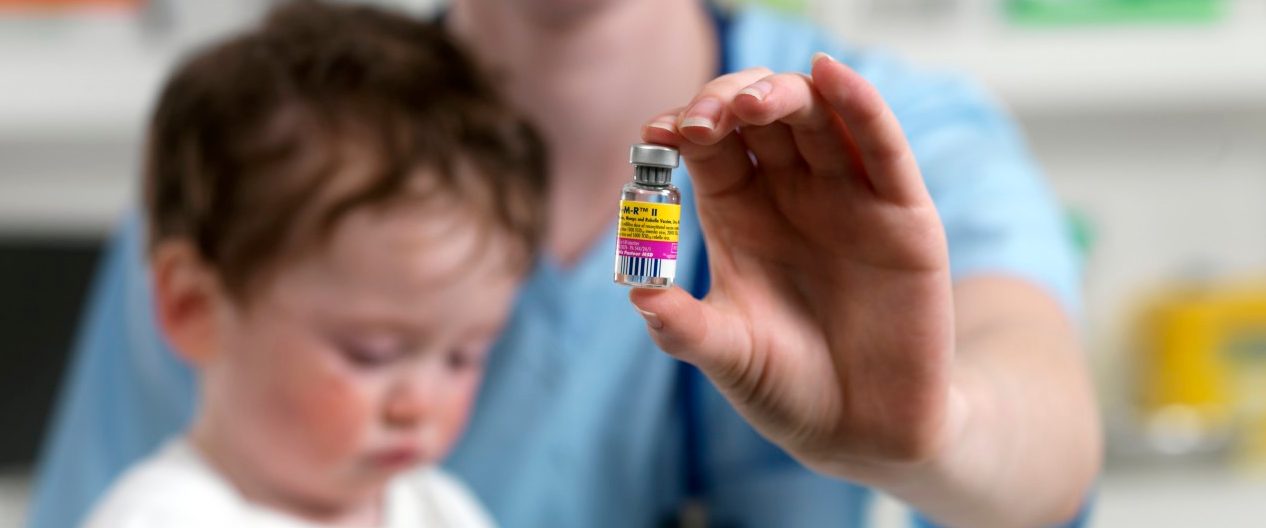What Everyone Should Know About Measles

You and your children will be safe if you get the vaccine.
Chances are, you’ve been hearing plenty about measles. In 2019, more than 1,200 people from 31 states and Washington D.C. were reported to have come down with the virus, the largest number of cases seen since 1992. By April 2020, that number had come down significantly, to 12 confirmed cases in 7 jurisdications (which includes all 50 states and the District of Columbia).
Measles travels faster than the flu and may be the most contagious disease we know. You can protect your children with two vaccine shots called “MMR,” which stands for measles, mumps, and rubella. Two shots are necessary because about 15 percent of children don’t develop immunity on the first go-round. The first dose is recommended at 12 to 15 months of age and the second before entering school, at 4 to 6 years of age. If you’re taking a child under a year old abroad, where the risk of measles may be greater, consult your child’s pediatrician. Children under age 5 are at greater risk for complications — including pneumonia, encephalitis, and death.
Parents who resist or delay vaccinating their children often say they fear a link to autism. A 1998 study, which was based on reports from parents of 8 children who appeared to show developmental problems after receiving the vaccine, was retracted in 2010. A meta-analysis of 1.3 million children in June 2014 showed no link between autism and vaccines or its components.
But American vaccination rates have been falling. At the time of the outbreak, California parents could skip their children’s shots for medical or religious reasons, or if they claimed a “personal belief exemption,” or PBE, and receive counselling. (Gov. Jerry Brown has since signed a bill to outlaw those exemptions.) The virus probably came to Disneyland carried by someone who had been overseas, officials say. It remains contagious in the air or on infected surfaces for up to 2 hours, and can jump from infected people who don’t know they’re sick. You’re contagious up to 4 days before the signature measles rash erupts. In 2014, a smaller outbreak in the United States began with travelers returning from the Philippines, which has had thousands of cases.
According to the World Health Organization, the first sign is usually a high fever, which begins about 10 to 12 days after exposure to the virus, and lasts 4 to 7 days. A runny nose, a cough, red and watery eyes, and small white spots inside the cheeks can appear, followed by a rash typically on the face and upper neck. The rash spreads over the next 3 days and fades after 5 or 6. People who have recovered from measles are immune.
Unlike other viruses that can be spread through contact with animals, measles only lives in humans. If immunization rates were boosted around the world, it wouldn't be able to find new victims and would eventually die. Because the vast majority of Americans have received an effective vaccine, there have been less than a 100 U.S. cases in most years since 2000, according to Centers for Disease Control and Prevention reports. In 1980, before measles vaccines became widespread, 2.6 million people died from measles worldwide every year, the World Health Organization reports. By 2013, that figure had dropped to 145, 700, and 84 percent of the world’s children received a dose of the vaccine before their first birthday. Vaccination prevented an estimated 15.6 million deaths between 2000 and 2013.
Americans who fear vaccines and put them off or oppose them for other reasons tend to live in clusters, which become particularly susceptible. In one study in northern California the percent of eligible children who hadn’t received their vaccines ranged from 18 percent to 23 percent in certain areas, compared to 11 percent outside them. Some pediatricians may begin refusing to see unvaccinated children, according to news reports, in order to protect babies too young for the vaccine.
The magazine Wired did its own investigation based on state data, analyzing vaccination rates at 12 day care centers affiliated with technology companies in the San Francisco Bay Area. Six had vaccination rates below average — and below the level necessary to prevent the spread of the disease — though the data may be out-of-date.
In the debate about stiffer laws, advocates point out that “anti-vaxxers” are threatening the health of their neighbors at significant cost. One study analyzed an outbreak in San Diego in 2008, after an intentionally unvaccinated 7-year-old boy came home from Switzerland with an unrecognized infection. One child, the researchers concluded, exposed an estimated 839 people to the virus and led to 11 other cases in unvaccinated children. Forty-eight children too young to be vaccinated were quarantined. The estimated public cost came to $10,376 per case.
Fear can spiral — one family is already threatening to flee the country to escape possible mandatory vaccinations against Ebola. Few of us know the full quote from President Franklin Delano Roosevelt’s first inaugural speech, “The only thing we have to fear is fear itself — nameless, unreasoning, unjustified terror.” How sad it will be if “unreasoning, unjustified” fear makes many more people sick.
Updated:
April 30, 2020
Reviewed By:
Janet O’Dell, RN